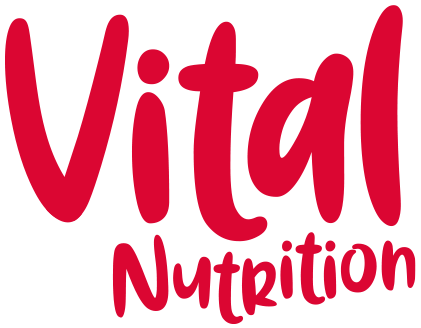Optimising your nutrition with GLPs
Weight loss medications like Wegovy, Mountjaro and Ozempic sound like a miracle cure for obesity and it is hard to argue with the results that people are seeing. This new wave of weight loss injections help regulate appetite, reduce ‘food noise’ and control cravings. They also have anti-inflammatory effects and help to regulate blood sugar and insulin balance.
They work by mimicking glucagon-like peptides (GLPs), hormones that are released in the digestive tract after we eat to tell us we’ve had enough and switch off hunger signals. The original research for this type of medication focussed on the treatment of diabetes, but more recently they have become synonymous with weight loss, and for many people this new wave of weight loss medication has been life changing.
We are now seeing even more benefits for inflammatory conditions, fatty liver disease and other conditions, so the potential of this type of medication is just at the tip of the iceberg, but they do come with some unpleasant side effects, such as diarrhoea, nausea, constipation and muscle loss.
If you are one of the many people using this type of medication, you will know that alongside the medication, you are offered dietary advice. Nutrition matters more than ever with this type of drug for two reasons – to help counterbalance some of the unpleasant side effects and to ensure adequate nutrition when you’re not eating as much as usual.
You’ve got to make every bite count. If you are taking in fewer calories because of the reduction in appetite, those calories need to come with a great big side order of vitamins, minerals, fibre, healthy fats, protein, antioxidants and be packed with as much nutrition as you can get on your plate.
Here are some simple ways you can support yourself if you are using this type of medication for weight loss:
Prioritise protein
One of the major side effects of this type of medication is substantial muscle loss – studies show this can be as much as 25% to 39% of the total weight lost over 36–72 weeks. Although it’s not clear why this is happening, protein matters for those using GLP1 agonists.
I would suggest keeping a food diary on an app like myfitnesspal or similar to track your protein intake. Aim for around 30g at each meal and get it from proper food – not shakes, bars or protein boosted processed junk food (yoghurts, cereals, etc.).
Aim for a palm sized portion of protein at each meal and mix it up – Greek yoghurt, seeds, nuts or eggs at breakfast; beans, lentils, tinned fish, chicken or cottage cheese at lunch and tofu, meat or fish at lunchtime.
If you are falling short, you could top up with a good quality protein powder – just remember to read the ingredients list and choose one that has as few excipients as possible. Brands like Form, FreeSoul or Naturya produce some of the least processed protein powders.
Focus on fibre
Keep your gut microbiome happy and your digestion supported with high fibre foods like wholegrains, pulses, fruit and vegetables, nuts and seeds. Fibre may help manage some of the unpleasant digestive side effects, but can also help keep your gut microbiome in check. Don’t forget that fibre needs water to do its thing, so keep well hydrated with water and herbal teas and skip out on calorie dense juices and cordials.
Eat small, frequent meals
If your appetite is not what it used to be, smaller meals can be easier to digest. Take your time to enjoy your food and sit at a table.
Digestion can be slower on GLP1 agonist meds, so don’t overload your system with big meals.
Eat better fats
Fats can be harder to digest with GLP meds, but they are essential for good health. Add olive oil to your diet and keep other fats to a minimum.
Simple cooking methods that use less fat, like steaming or poaching is ideal – avoid frying foods.
Rethink your drinks
Stay hydrated, but sip water and herbal teas between meals as too much with a meal can leave you feeling too full.
Be gentle with your digestion
Cut out alcohol, heavy or rich foods and processed foods or takeaways. A short walk after eating can help digestion.
Avoid filling up on empty calories from processed foods, white carbs and high sugar foods – these foods will fill you up without adding much nutrition to your diet.
Stay strong!
Add strength training exercise into your routine to help maintain muscle. The substantial muscle loss caused by GLP1 agonist meds is alarming, so do as much as you can to help preserve muscle. Aim for 2-3 strength training sessions a week. If this is new for you, take a visit to your local gym and book in for a class, or take a look at YouTube – Joe Wicks has some good classes for beginners.

